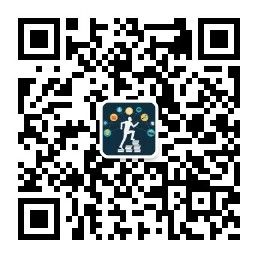Tumor molecular typing and drug sensitivity prediction model based on artificial intelligence
Background: Cancer is a highly heterogeneous disease, and tumor cells in different patients and different sites may have different molecular characteristics, such as gene mutations, expression profiles, epigenetic modifications, etc., which affect the biological behavior and drug response of tumors. Therefore, molecular typing of tumors, that is, dividing tumors into different subtypes based on molecular characteristics, is an important step in achieving precision medicine and individualized therapy. However, tumor molecular typing faces challenges such as data complexity, heterogeneity and dynamics, which are difficult to be effectively addressed by traditional rule-based or statistical methods. Therefore, the use of artificial intelligence (AI) technology combined with multi-source heterogeneous data to establish tumor molecular typing and drug sensitivity prediction models is a promising solution.
Project information: This project aims to develop an artificial intelligence-based tumor molecular typing and drug sensitivity prediction model to achieve accurate diagnosis and individualized treatment of tumors. This project will use a variety of artificial intelligence algorithms, such as deep learning, graph neural networks, reinforcement learning, etc., combined with a variety of data sources, such as genomics, transcriptomics, proteomics, metabolomics, imaging, etc., to build tumor molecular characterization and drug response prediction models, and use clinical data to verify and evaluate the models.
Project content:
Data collection and preprocessing: Obtain multiple types of tumor data from public databases or partner institutions, including gene mutation, copy number variation, methylation level, gene expression, protein expression, metabolite level, drug sensitivity, etc., and conduct data cleaning, standardization, integration and other preprocessing operations to obtain data sets that can be used in artificial intelligence models.
Molecular characterization: Deep learning algorithms, such as autoencoders, variational autoencoders, and generative adversarial networks, are used to extract high-level feature vectors from multi-dimensional molecular data, and clustering or classification methods are used to reduce and visualize the feature vectors to find potential tumor subtypes.
Drug response prediction: Graph neural network algorithm, graph Convolutional network, graph attention network, graph autoencoder, etc., is used to construct tumor-drug interaction graph using molecular feature vector and drug structure information, and information transmission and embedding learning are carried out on the graph to predict tumor sensitivity or resistance to different drugs.
Model optimization and evaluation: Reinforcement learning algorithms, such as Q-learning, strategy gradient, actor-critic, etc., use clinical data as feedback signals to conduct online learning and optimization of the model, and use a variety of evaluation indicators, such as accuracy, recall rate, AUC, MSE, etc., to evaluate the predictive effect of the model on the training set and test set. It is compared and analyzed with the existing methods.
Topic innovation:
In this project, a variety of artificial intelligence algorithms, multi-source heterogeneous data, and clinical feedback signals are comprehensively used to establish an efficient, accurate and intelligent tumor molecular typing and drug sensitivity prediction model, which provides a new method and tool for accurate diagnosis and individualized treatment of tumors.
In this study, deep learning algorithms were used to extract high-level feature vectors from high-dimensional molecular data, effectively reducing the complexity, heterogeneity and dynamics of the data, while retaining the key information and internal structure of the data, providing a new Angle and means for molecular classification of tumors.
In this study, the graph neural network algorithm was used to construct the tumor-drug interaction graph by using molecular feature vectors and drug structure information, and information transmission and embedding learning were carried out on the graph, which fully explored the nonlinear and high-order relationship between tumors and drugs, and provided a new idea and framework for drug response prediction of tumors.
In this study, reinforcement learning algorithm was used to make use of clinical data as feedback signals to conduct online learning and optimization of the model, enhance the model's adaptability and generalization ability, and provide a new mechanism and strategy for tumor dynamic monitoring and treatment adjustment.

Project information: This project aims to develop an artificial intelligence-based tumor molecular typing and drug sensitivity prediction model to achieve accurate diagnosis and individualized treatment of tumors. This project will use a variety of artificial intelligence algorithms, such as deep learning, graph neural networks, reinforcement learning, etc., combined with a variety of data sources, such as genomics, transcriptomics, proteomics, metabolomics, imaging, etc., to build tumor molecular characterization and drug response prediction models, and use clinical data to verify and evaluate the models.
Project content:
Data collection and preprocessing: Obtain multiple types of tumor data from public databases or partner institutions, including gene mutation, copy number variation, methylation level, gene expression, protein expression, metabolite level, drug sensitivity, etc., and conduct data cleaning, standardization, integration and other preprocessing operations to obtain data sets that can be used in artificial intelligence models.
Molecular characterization: Deep learning algorithms, such as autoencoders, variational autoencoders, and generative adversarial networks, are used to extract high-level feature vectors from multi-dimensional molecular data, and clustering or classification methods are used to reduce and visualize the feature vectors to find potential tumor subtypes.
Drug response prediction: Graph neural network algorithm, graph Convolutional network, graph attention network, graph autoencoder, etc., is used to construct tumor-drug interaction graph using molecular feature vector and drug structure information, and information transmission and embedding learning are carried out on the graph to predict tumor sensitivity or resistance to different drugs.
Model optimization and evaluation: Reinforcement learning algorithms, such as Q-learning, strategy gradient, actor-critic, etc., use clinical data as feedback signals to conduct online learning and optimization of the model, and use a variety of evaluation indicators, such as accuracy, recall rate, AUC, MSE, etc., to evaluate the predictive effect of the model on the training set and test set. It is compared and analyzed with the existing methods.
Topic innovation:
In this project, a variety of artificial intelligence algorithms, multi-source heterogeneous data, and clinical feedback signals are comprehensively used to establish an efficient, accurate and intelligent tumor molecular typing and drug sensitivity prediction model, which provides a new method and tool for accurate diagnosis and individualized treatment of tumors.
In this study, deep learning algorithms were used to extract high-level feature vectors from high-dimensional molecular data, effectively reducing the complexity, heterogeneity and dynamics of the data, while retaining the key information and internal structure of the data, providing a new Angle and means for molecular classification of tumors.
In this study, the graph neural network algorithm was used to construct the tumor-drug interaction graph by using molecular feature vectors and drug structure information, and information transmission and embedding learning were carried out on the graph, which fully explored the nonlinear and high-order relationship between tumors and drugs, and provided a new idea and framework for drug response prediction of tumors.
In this study, reinforcement learning algorithm was used to make use of clinical data as feedback signals to conduct online learning and optimization of the model, enhance the model's adaptability and generalization ability, and provide a new mechanism and strategy for tumor dynamic monitoring and treatment adjustment.

| Kind reminder: Suzhou Beike Nano supply products are only used for scientific research and cannot be used for the human body. The specifications and performance of different batches of products may vary. Some literature case images on the website are sourced from the internet and are for reference only. Please focus on physical objects. If there is any infringement, please contact us to delete them immediately. |
Previous article: Design and performance
Next article: Life Sciences - Micro-






